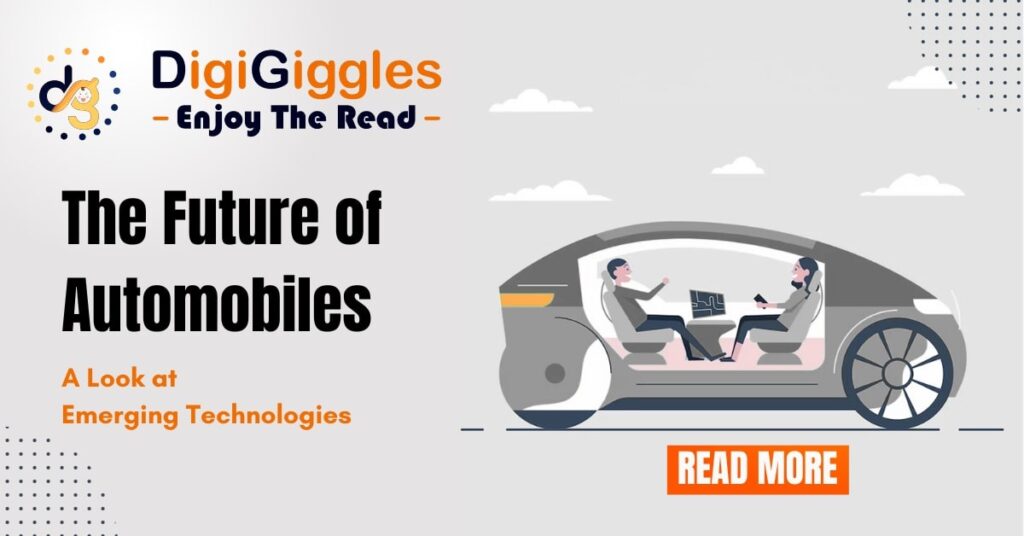
The automobile industry has evolved a lot since the first car was rolled out in the late 19th century. After years of research and development, cars have grown from simple petrol-based vehicles to complex engineering marvels installed with advanced safety features and new-age technologies. But still, the race for innovation is never-ending and its pace in the automotive industry is accelerating, and we are standing on the footsteps of a new era of automobile engineering.
Let’s take a closer look at some of the emerging technologies that are shaping the future of automobiles.
Electric Vehicles (EVs)
The most remarkable shift in the automotive industry is the transition from internal combustion engines (ICEs) to electric powertrains. Electric vehicles (EVs) have gained immense popularity recently, driven by their environmental benefits and technological advancements. Companies like Tesla, Toyota, Tata, and BYD have already increased their market share by introducing these swanky and futuristic vehicles.
EVs are becoming the go to tool for policy makers and manufacturers due to their zero-emission features making them ideal for meeting emission targets and ultimately reducing greenhouse gas emissions to tackle climate change. As battery technology continues to evolve, we can expect EVs to become more affordable, with longer ranges and faster charging times. Additionally, governments worldwide are offering incentives and subsidies to promote EV adoption, further accelerating their growth.
Autonomous Vehicles (AVs)
Self-driving cars or autonomous vehicles (AVs) are no longer a figment of imagination. They are quickly becoming a reality. Companies like Tesla and Uber and traditional automakers like Ford and Mahindra are investing heavily in autonomous technology research and development, aiming to redefine transportation.
AVs have the potential to significantly improve road safety by eliminating human error, which is a leading cause of accidents. They can also reduce traffic congestion and improve fuel efficiency by optimizing routes and driving patterns. Still, there are numerous technical, regulatory, and ethical challenges to overcome before AVs become common on our roads.
Connectivity and IoT
The Internet of Things (IoT) is making its way into our cars, resulting in what is called a “connected car.” Modern vehicles are equipped with a range of sensors and connectivity options that enable them to communicate with other vehicles, infrastructure and the cloud.
Connected cars can provide real-time traffic information, predict maintenance needs and even enable over-the-air software updates. They can even enhance safety by alerting drivers to potential hazards and assisting in emergencies. As 5G networks become more widespread, it’s only natural that capabilities of connected cars increase.
Advanced Driver Assistance Systems (ADAS)
Advanced Driver Assistance Systems (ADAS) helps drivers in a range of everyday driving tasks, like parking vehicles to lane-assist. These systems continue to evolve and are becoming more complex by the day.
Some standout features of ADAS include lane-keeping assist, automatic emergency braking, blind-spot monitoring, and adaptive headlights. These technologies can lead to semi-autonomous driving in the near future. This can help make our roads safer by reducing driver fatigue and potentially eliminating human error.
Lightweight Materials
The adoption of lightweight materials by automobile manufacturers like carbon fibre, aluminum and high-strength steel has seen an upward trend. They are lighter than traditional steel but at the same time provide crash protection due to use of crumple zones and also provide overall integrity to the vehicular structure. This also improves fuel efficiency and reduces emissions.
They also help offset the impact of the hefty battery packs used in EVs. It also helps in better handling and performance.
Sustainable Manufacturing
In today’s age, automobile manufacturers are focusing on sustainable manufacturing. Many of them have adopted low impact manufacturing practices. These include but are not limited to the use of renewable energy, lower utilization of water and reducing waste production.
The recycling of materials such as lithium-ion batteries is fast gaining popularity. As the demand for EVs grows, recycling will become an important aspect of ensuring that the environmental impact of production is minimal.
Augmented Reality (AR) and Heads-Up Displays (HUDs)
Augmented reality and heads-up displays are enhancing the driving experience by overlaying digital information onto the real-world view. These technologies can project navigation instructions, speed limits, and other essential data directly onto the windshield, allowing drivers to access critical information without taking their eyes off the road.
They also assist in safety by providing warning signals about obstacles and pedestrians. In the near future, they’ll become standard features.
Driving Forward
The future of automobiles is filled with excitement and promise. It will be shaped by technologies that have the potential to transform the way we drive . The automotive industry is rapidly evolving to meet the needs of a changing world, with advancements in electric vehicles, autonomous driving, connectivity, advanced materials, and sustainable manufacturing.
As these emerging technologies continue to mature and become more accessible, we can expect safer, more efficient, and environment friendly transportation options. While challenges remain, such as regulatory hurdles and the need for robust cybersecurity measures, the path of the automotive industry is bright – towards a future of innovation and progress that will shape the way we travel for generations to come. The only question now is how soon these advancements will become an integral part of our daily lives on the road.